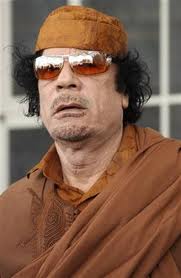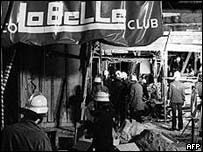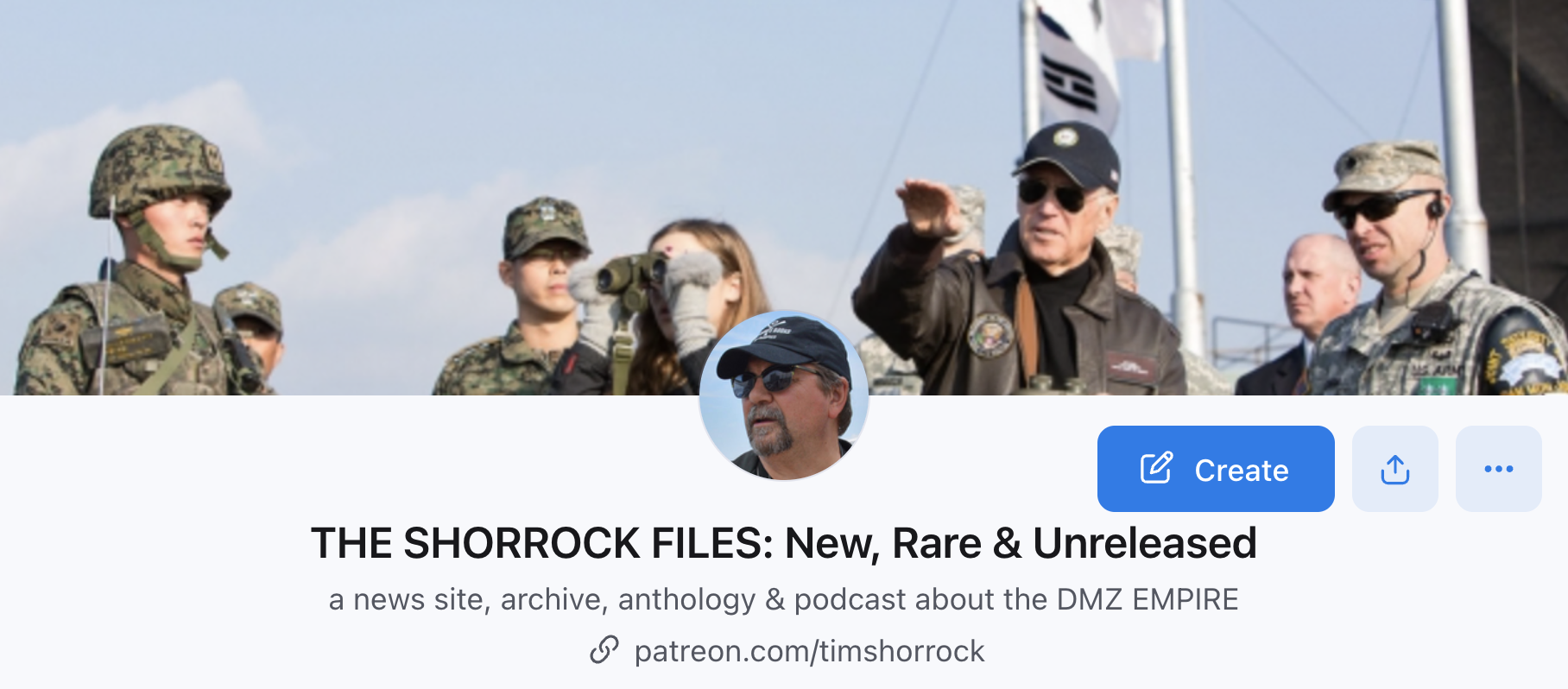Michael Isikoff reports at MSNBC today that a former top CIA official has told him there is “no doubt” that Moammar Gadhafi personally approved the 1988  bombing of Pan Am Flight 103 over Lockerbie, Scotland, one of the incidents that. for many Americans, defined the era of modern terrorism:
bombing of Pan Am Flight 103 over Lockerbie, Scotland, one of the incidents that. for many Americans, defined the era of modern terrorism:
“There are two things that you can take to the bank,” said Frank Anderson, who served as the agency’s Near East affairs chief between 1991 and his retirement in 1995. “The first one is, Pan Am 103 was perpetrated by agents of the Libyan government. And the second thing is, that could not have happened without Moammar Gadhafi’s knowledge and consent. “There is no question in my mind that Moammar Gadhafi authorized the bombing of Pan Am 103.”
The statement by Anderson — and other comments to NBC by a top FBI agent on the case —could give fresh momentum for a reopening of the Lockerbie investigation. Secretary of State Hillary Clinton said last week that she intended to push for such a probe in light of new claims by Libya’s ex-justice minister, Mustafa Abdel Jalil, that he had “proof” that Gadhafi ordered the bombing, which killed 270 people, including 190 Americans.
This story reminds me of something I learned about U.S. intelligence and Gadhafi a few years ago: that Libya was one of the first countries targeted by the National Security Agency in a program that originated in the 1980s to electronically track financial flows through the global money system as a routine part of intelligence and law enforcement.
Due to this tracking system, I was told in 2007 by a former NSA official, the Reagan administration was able to prove that Gadhafi and Libyan intelligence operatives were behind the 1983 bombing of a night club in Berlin that killed three U.S. soldiers and a Turkish woman and injured at least 200 more. 
The information came in a 2007 story I published in Salon about the extensive role played by the NSA in financial spying inside the United States, and the NSA’s use of a software program called PROMIS that the U.S. government allegedly stole from a U.S company called Inslaw. Here’s what I wrote:
According to reports over the years in the U.S. and foreign press, Inslaw’s PROMIS software was embedded surreptitiously in systems sold to foreign and global banks as a way to give the NSA secret “backdoor” access to the electronic flow of money around the world.
In May [2007], I interviewed Norman Bailey, a private financial consultant with years of government intelligence experience dating from the George W. Bush administration back to the Reagan administration. According to Bailey — who from 2006 to 2007 headed a special unit within the Office of the Director of National Intelligence focused on financial intelligence on Cuba and Venezuela — the NSA has been using its vast powers with signals intelligence to track financial transactions around the world since the early 1980s.
From 1982 to 1984, Bailey ran a top-secret program for President Reagan’s National Security Council, called “Follow the Money,” that used NSA signals intelligence to track loans from Western banks to the Soviet Union and its allies. PROMIS, he told me, was “the principal software element” used by the NSA and the Treasury Department then in their electronic surveillance programs tracking financial flows to the Soviet bloc, organized crime and terrorist groups. His admission is the first public acknowledgement by a former U.S. intelligence official that the NSA used the PROMIS software.
According to Bailey, the Reagan program marked a significant shift in resources from human spying to electronic surveillance, as a way to track money flows to suspected criminals and American enemies. “That was the beginning of the whole process,” he said.
The NSA’s abilities, he told me in an interview in Washington, were so good that it was able to definitely prove through its tracking that one western loan had made its way from East German to Libya, where it was used to finance the Libyan bombing in Berlin. In response, Reagan sent bombers to Tripoli and Benghazi to retaliate against Gadhafi, killing dozens of people, including the dictator’s adopted daughter, and destroying his home.
According to a BBC account of the disco bombing, “It took the US government 10 days to retaliate for the attack by bombing Libya – it took 15 years and the fall of the Berlin Wall to convict the attackers…Intercepted messages between Tripoli and agents in Europe made it clear that Libyan leader Colonel Gaddafi was the brains behind the attack, the US said.” Reagan discussed the evidence in an April 14, 1986, television broadcast when he announced the bombing attack on Gadhafi:
On March 25th, more than a week before the attack, orders were sent from Tripoli to the Libyan People’s Bureau in East Berlin to conduct a terrorist attack against Americans to cause maximum and indiscriminate casualties. Libya’s agents then planted the bomb. On April 4th the People’s Bureau alerted Tripoli that the attack would be carried out the following morning. The next day they reported back to Tripoli on the great success of their mission. Our evidence is direct; it is precise; it is irrefutable.
However, U.S. intelligence apparently never made public the NSA evidence that it used to convince President Reagan of Gadhafi’s guilt. In the 2001 Berlin trial where four people, including a Libyan diplomat were found guilty of planning the disco bombing, the German court complained bitterly about the “limited willingness” of American intelligence to provide evidence in the case.
That’s not surprising; the NSA has traditonally liked to keep its secrets – particularly secrets about the tentacles it might have in the global financial system – hidden (and of course the agency would not comment on any aspect of my Salon story). But in the post-9/11 period when the 2001 trial took place, it was beginning to use its skills extensively to track terrorists and their sympathizers. As I concluded in my Salon piece:
After 9/11, [the NSA’s capability] was instantly seen within the U.S. government as a critical tool in the war on terror — and apparently was deployed by the Bush administration inside the United States, in cases involving alleged terrorist supporters. One such case was that of the Al-Haramain Islamic Foundation in Oregon, which was accused of having terrorist ties after the NSA, at the request of the Treasury Department, eavesdropped on the phone calls of Al-Haramain officials and their American lawyers. The charges against Al-Haramain were based primarily on secret evidence that the Bush administration refused to disclose in legal proceedings; Al-Haramain’s lawyers argued in a lawsuit that was a violation of the defendants’ due process rights.
According to Bailey, the NSA also likely would have used its technological capabilities to track the charity’s financial activity. “The vast majority of financial movements of any significance take place electronically, so intercepts have become an extremely important element” in intelligence, he explained. “If the government suspects that a particular Muslim charitable organization is engaged in collecting funds to funnel to terrorists, the NSA would be asked to follow the money going into and out of the bank accounts of that charity.”
Thanks to Jeff Stein (@SpyTalker) for the Twitter tip on Isikoff’s CIA story today.


America’s real competitive advantage derived from stolen software it uses for spying on friend and foe, alike. It is the story of the century. For a detailed timeline of the Inslaw/PROMIS case, visit History Commons: Loss of US Civil Liberties: Inslaw and PROMIS
Tim Shorrock’s article above is not only fascinating but it is of major historical significance. Great work, Tim!
For further reading see The Last Circle book for the detailed story of the PROMIS software scandal. You can go to the Ark-Roundtable.com website and click on “The Inslaw Affair.” This chapter was authorized by Bill Hamilton, owner of Inslaw Co. and developer of the PROMIS software.